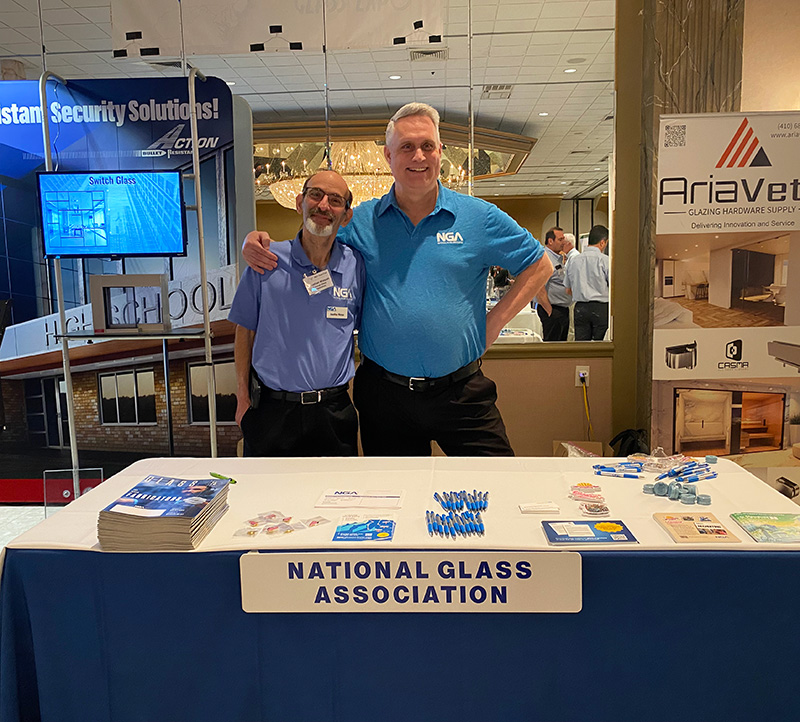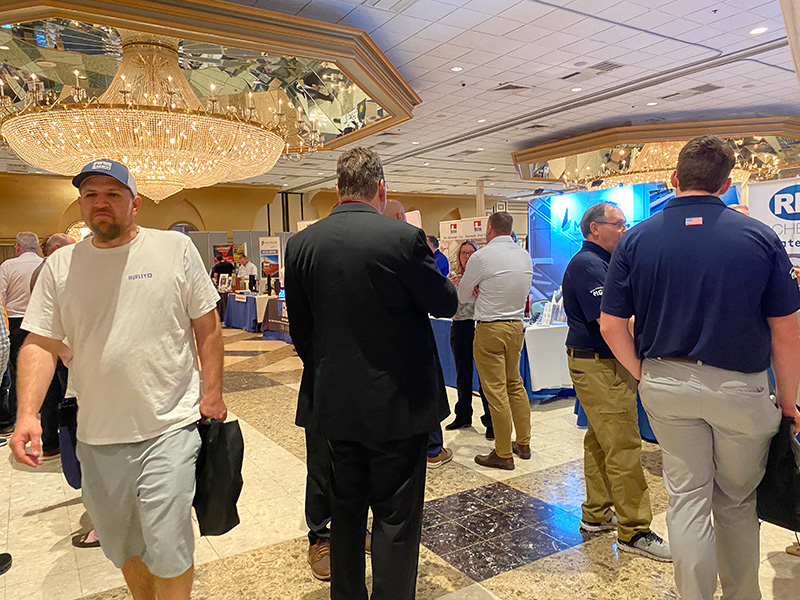
On Wednesday, April 23, the Mid-Atlantic Glass Association’s Glass Expo welcomed 1,962 attendees to its glass and fenestration industry event.
The show’s first edition was held in 1987 in Langley Park, Maryland, and according to current president Tommy Bryant, had about 10-12 exhibitors. This year’s event—now held at Martin's Crosswind in Greenbelt, Maryland—welcomed 162 exhibitors, the biggest number so far, including 16 new exhibitors and 11 new members.
Bryant, who also owns local business Brylin Glass, attributes the amount of growth to the tight-knit community in the area. “Everybody knows everybody,” he says.
Tariffs, federal layoffs and the Mid-Atlantic market
While the Mid-Atlantic market is usually a strong one, exhibitors were mixed in their description of the strength of building and demand in the region—some are experiencing growth, while others expressed uncertainty regarding the health of the market due to the recent layoffs of federal employees.
Tommy Williams, a representative for PAC-CLAD Petersen, says it’s hard to say how the market will be, given this larger change. “Typically the D.C. market has been somewhat protected economically because of the stability of government jobs, but given that this has changed, it’s hard to say how the market will be,” he says.
Bryant says that from his perspective, business is good, and underlined the importance of the region as a major market in the U.S. “If the market tanks here, the whole country could feel the effects,” he says.
Uncertainty also remains around the impact of tariffs on the regional and national markets. Adriano Braga of Keraglass, a machinery manufacturer based in Italy, says the tariff policies and delays are affecting imported machinery, largely because of the unpredictability. He says the company and their customers are waiting for the ultimate decision regarding tariff rates.
Demand for security and protective glazing grows
Though still a specialty product in many instances, security and protective glazing systems are in demand according to several exhibitors. Available products offer a range of protections from bullet-resistant, blast-resistant, fire-rated, forced-entry protection and also storm impact.
Joseph Hayes, president of Action Bullet Resistant, says that houses of worship remain a big source of demand for security glazing, a demand that has doubled since last year.
Complexities remain in the adoption of security systems, as they remain a “niche” product, says Technical Glass Products' Tim Donaldson, architectural service manager. While protective products like fire-rated systems are code driven, security glazing and products are not. Action Bullet Resistant’s Hayes says the company also has found difficulty having security products written into specs properly, which can be a challenge in their broader adoption.
Protective glazing manufacturer U.S. Bullet Proofing is experiencing “exponential growth” according a rep. He says that customers are choosing higher levels of protective systems now, levels that previously were only used for overseas embassies.
Besides bullet-resistant glazing, he says they’re seeing a greater demand for storm impact glazing for events like tornadoes. He says that FEMA standards for storm impact are starting to replace Florida Building Code requirements in certain areas of the country related to non-hurricane storms.

Manufacturers offer customization, high-performance to fabricators
Several manufacturers showcased high-performance and specialty products underlining bird-friendly applications and energy efficiency. Many products also offered greater flexibility for fabricators.
Vitro Architectural Glass’s Will Elman, commercial account manager for the Great Lakes Region, says the company is looking to be a “one-stop shop” for glass fabricators. To that end, the manufacturer is offering its BirdSmart bird-friendly glass, which features a first-surface laser-etched pattern with Solarban low-emissivity coating on the second surface. Additionally, the company is offering three colors of spandrel glass to fabricators. These value-added products allow fabricators to do less work in-house, Ellman explains.
Walker Glass also featured a new non-directional bird-friendly pattern. With directional patterns, fabricated glass ends up being wasted, explains Jacob Bowser, sales and architectural manager, since fabricators are cutting the glass to align the pattern perfectly. With non-directional patterns, perfect alignment between installed panels is not needed, and so less glass is wasted, he says.
Companies like U.S. Glass Fence are also offering customization to glass fabricators through their variable height glass railings. Designed to act as a wind-barrier for outdoor seating environments like restaurant patios, the railing posts allow the system to be raised automatically or lowered manually by end-users in the case of increased wind, says rep Robin Leigh. Leigh says the company can sell the posts by themselves to fabricators so that those companies can provide their own custom glass.
Both Vitro and Guardian brought their vacuum insulating products to the expo. Vitro’s second-generation VacuMax now minimalizes the ports and spacers. Guardian’s tempered VIG product, produced in partnership with Denmark-based Velux, was announced in March of last year. Guardian’s Richard Blymire, architectural design manager for the capital region, emphasized that the company is offering an AIA-accredited course on VIG as well, available in-person or live.
